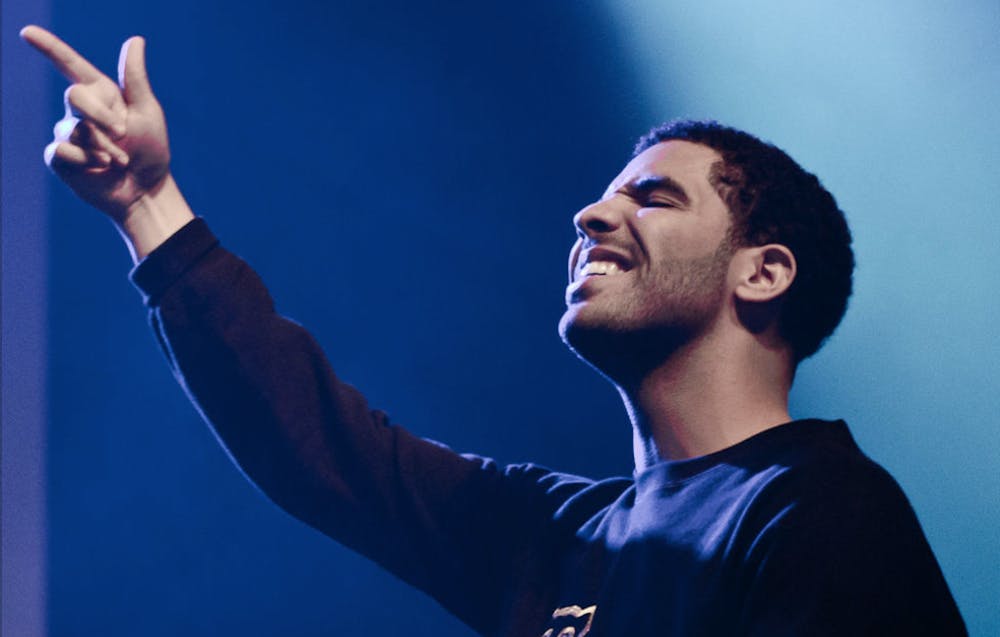Drake is a massive figure. He is a global superstar, one of the most recognizable faces of the past ten years. He has exceeded pure stardom; He has exceeded hip hop fame. He is the image of wealth, success, cool. Perhaps this explains why Drake’s recent music is so... boring.
He seems to have left his mortal body behind in the Thank Me Later days. It is almost as though he forgot what emotions feel like, having become this commercialized music-making machine.
His latest album... ahem, playlist, More Life is more evidence of Drake’s movement away from personal, witty rap toward flat, homogenized, commercial dance-pop.
Based on the rollout of this project, many assumed that this could be the OVO Sound version of the GOOD Music Cruel Winter tape, yet that didn’t turn out to be true. While there are a fair number of features, and the cover advertises this as a product of the October Team, this is still just a longer Drake album.
In fact, it seems that the “playlist” designation is just a strategic move to minimize the legacy of this project. This isn’t “Mixtape Drake” or “Album Drake”; This is just a random collection of Drake tracks.
A more apt and accurate name for this project would be Views – the B sides Collection. This would be Drake’s version of Kendrick Lamar’s Untitled Unmastered... if Untitled Unmastered had a soulful, impromptu, unpolished character. More Life is this hyper polished, austere, hyper-produced collection.
The biggest disappointment of this project is that Drake doesn’t rap particularly well. Drake’s rhyming style has shifted many times over the past few years. During his first years, Drake was Lil Wayne’s protégé, so he rapped a lot like Weezy did, with a quick, rambling delivery, tripping across rhymes casually.
Then, when punchline-rap became the law of the land, Drake made songs like “The Motto,” where each line ends on a quick witty, memorable, word. A couple years ago (around the time of Migos’ “Versace”), Drake adopted the Migos triplet flow.
Recently, Drake seems to have taken the parts of each style he finds successful and diluted them into this lazy, meandering, couplet flow that is thoroughly boring. Here is a standard Drake verse, off the first song of More Life, “Free Smoke”:
“I had some different priorities / Weezy had all the authority / Women I like was ignorin’ me / Now they like, ‘Aren’t you adorable?’ / I know the question rhetorical.”
Notice the recycled topics: Drake continuously talks about growth and becoming the man. Notice the repetitive, maddening rhyme scheme. Drake raps the simplest verses I’ve heard in a while on this project. Each line ends on a hard rhyme to the line before, creating this almost lullaby-like rhythm (“Twinkle, twinkle, little star / How I wonder what you are”).
This terrible flow is coupled with a delivery that seems absolutely bored. Drake raps like someone’s holding a gun to his head and forcing him to talk. There is no passion behind the words, no interest in the delivery.
This is no longer the ambitious Drake who tried to be “the best rapper alive.” This is the Drake who sings “billboard melodies.” Songs like “Can’t Have Everything,” “KMT” (which is a fairly obvious XXXTENTACION ripoff) and “Free Smoke” suffer from this mind-numbing lyrical style.
The only rap aspect of this album that excited me was Young Thug’s verse on “Sacrifices.” Thug drops the auto tune, and for the first time in his music career sounds like a human rapper on the track. The lyrics are easily discernible and fun to listen to.
I hope that Thug continues to play around with using his real voice on songs. Besides Sampha’s beautiful voice, most of the other features are either bad or just uninteresting.
The other half of this project is the half that I assume Drake actually cares about, the dancehall tracks. I like singing-Drake. I think that singing-Drake has made some great songs. “Hotline Bling” continues to be a phenomenal song, even after being overplayed everywhere.
Dancehall-Drake can definitely work at some points, but on More Life, all of the singing tracks are boring and watered down. The reason that a song like “Work” or “Fake Love” is successful is because there is an energy to the delivery, to the riddim, that is catchy and fun to listen to. Songs like “Passionfruit” fall flat because everything feels so synthetic and forced.
This actually describes one of my central issues with the production. While everything sounds technically perfect and the beats are technically good, there is ironically, very little life to the instrumentation across this whole project.
The songs that are supposed to be bangers, “Glychester” and “KMT,” sound like perfectly mixed versions of Trap Preset #3 in any music creation software.
The most interesting rap beat on this project, besides “Fake Love,” is “Portland,” which benefits from a nostalgic recorder sample. This song would be great if the lyricism was interesting in any way, but Drake, Quavo and Travis Scott take no advantage of the melody and just ramble atop the production.
This project was a major disappointment. I hoped that Drake could come back after what was a very mediocre project in Views.
I thought that “Sneakin’” and “Fake Love” were both steps in the right direction. These were two singles with completely different and exciting styles. “Sneakin’” isn’t on the final project, and “Fake Love” is far less enjoyable in the context of the album.





